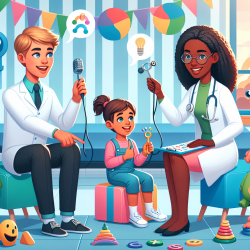In the world of speech-language pathology, the theoretical foundations laid by pioneering researchers are indispensable. One such cornerstone is the work of Alexander Luria, whose theories on aphasiology offer profound insights into the diagnosis and treatment of language disorders. "An Introduction to Luria's Aphasiology: Theory and Application" by Aura Kagan and Michael M. Saling provides a comprehensive look at Luria's contributions. This blog aims to distill the key outcomes of this research to help online therapy practitioners improve their skills and encourage further exploration.
Understanding Luria's Theories
Luria's approach to aphasiology is distinct for its focus on the complex interplay between different brain regions and their roles in language processing. His theories emphasize the importance of understanding the underlying neurological mechanisms that contribute to aphasia. By grasping these concepts, practitioners can better tailor their therapeutic interventions to address the specific needs of their clients.
Key Concepts in Luria's Aphasiology
- Functional Systems: Luria proposed that language functions are not localized in a single brain area but are the result of complex interactions between multiple regions.
- Aphasia Classification: He introduced a detailed classification system that goes beyond traditional models, categorizing aphasia based on the disrupted functional systems.
- Assessment and Treatment: Luria's methods for assessing and treating aphasia involve a holistic approach, taking into account the individual's cognitive, emotional, and social context.
Implementing Luria's Theories in Online Therapy
As an online therapy practitioner, you can integrate Luria's theories into your practice in several ways:
1. Comprehensive Assessments
Utilize Luria's detailed classification system to conduct thorough assessments. This will help you identify the specific type of aphasia and its underlying causes, enabling you to design more effective treatment plans.
2. Personalized Treatment Plans
Adopt a holistic approach to treatment by considering the client's overall cognitive and emotional state. Incorporate activities that engage multiple brain regions and promote functional recovery.
3. Continuous Learning and Adaptation
Stay updated with the latest research in aphasiology and related fields. Regularly review and adapt your therapeutic techniques based on new findings to ensure your clients receive the best possible care.
Encouraging Further Research
Luria's work serves as a foundation for ongoing research in aphasiology. By diving deeper into his theories, you can contribute to the advancement of the field and improve your practice. Consider the following steps:
1. Engage with Academic Literature
Regularly read research articles and books on aphasiology and related topics. This will help you stay informed about the latest developments and innovative therapeutic approaches.
2. Participate in Professional Development
Attend conferences, workshops, and webinars to network with other professionals and learn from experts in the field. These events offer valuable opportunities for professional growth and knowledge sharing.
3. Collaborate with Researchers
Consider collaborating with academic researchers to conduct studies or pilot new therapeutic techniques. Such collaborations can lead to valuable insights and advancements in the field of aphasiology.
To read the original research paper, please follow this link: An Introduction to Luria's Aphasiology: Theory and Application










